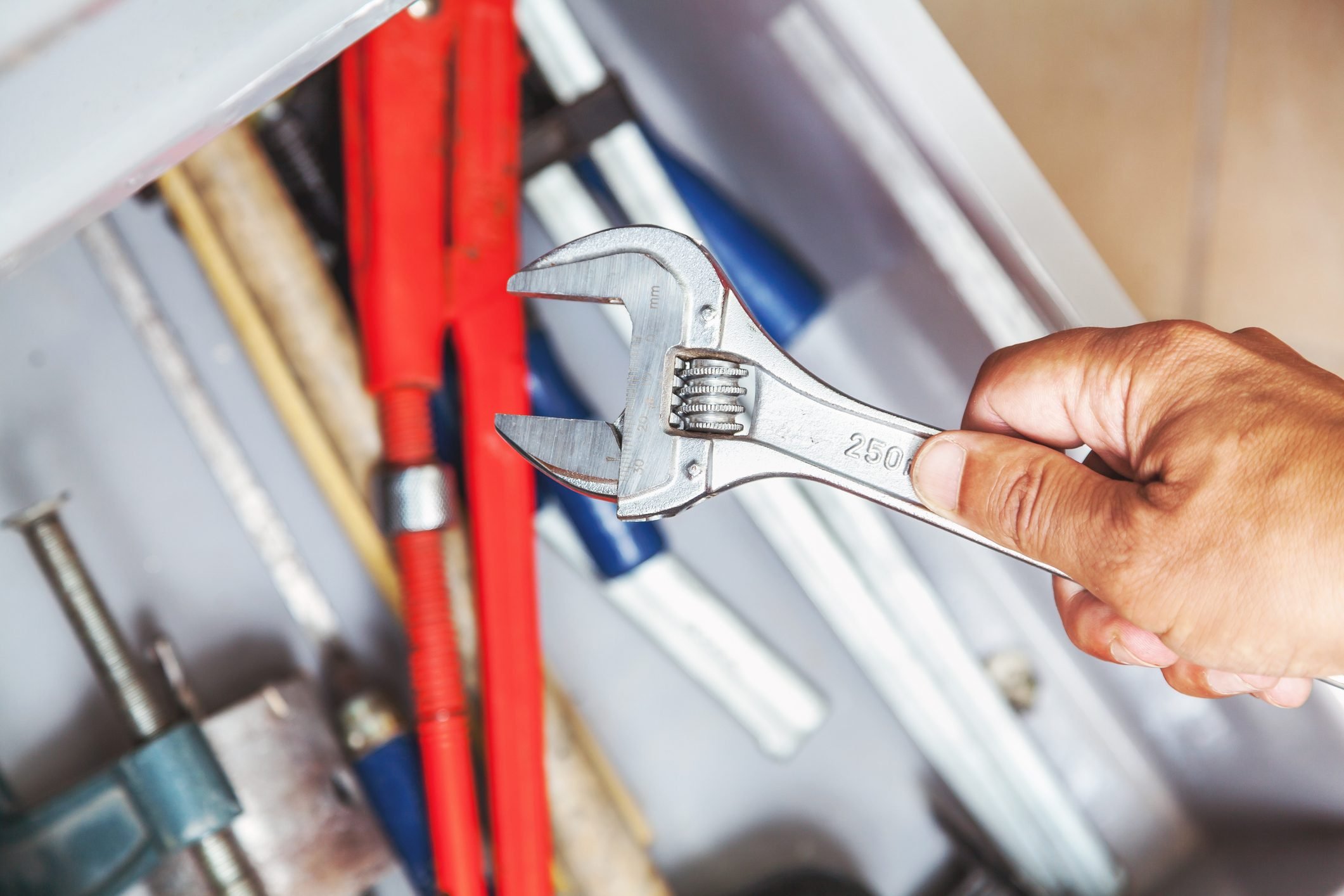A monkey wrench is an adjustable spanner wrench, but not necessarily vice versa. Find out the difference and why you might need one or the other.

What To Know About Adjustable Spanner Wrenches

When in England, you “throw a spanner wrench into the works” when you want to sabotage something. But if you’re in America, you “throw a monkey wrench.” This interchangeability suggests the tools are equivalent, but they aren’t; they have different historical lineages.
Monkey wrenches had long been in use in the U.S. before Swedish inventor Johan Petter Johansson received patents for a pipe wrench and an adjustable spanner wrench in 1891. Most modern tools, even today’s version of the monkey wrench. follow Johansson’s design.
With spanners and monkey wrenches, you adjust the width of the jaws by rotating a dial with your thumb. While both jaws moved on a 19th-century monkey wrench, only one jaw of a spanner does. The stationary jaw gives a spanner the extra strength that makes it a better tool.
Today, you can find several types of adjustable spanner wrenches and pliers, all indispensable tools for plumbers and mechanics. Because of the availability of socket wrenches, which can also turn fasteners, an adjustable spanner isn’t quite as indispensable as a pipe wrench or set of adjustable pliers. But when clearance is limited, an adjustable spanner wrench is often the best tool for the job.
On This Page
What Is an Adjustable Spanner Wrench?
An adjustable spanner resembles an open-end wrench. One of the jaws connects to a bar with teeth that fit into the grooves of a thumbscrew. When you rotate the screw, the grooves function like a worm drive to open and close the jaw.
The action is like that of a pipe wrench. The difference is, a spanner’s jaws extend parallel to the handle, not perpendicular. And because a spanner is never used for turning pipes, it lacks serrations on the jaws. The smooth jaws allow for more accurate gripping of square and hexagonal nuts and bolt heads.
Heavyweight boxing champion Jack Johnson received a patent for a version of a pipe wrench with smooth jaws in 1920. Also known as a monkey wrench, it was a popular tool in its day. Today it’s considered an antique and is no longer available. Another type of monkey wrench is still available, however. Keep reading!
How Does an Adjustable Spanner Wrench Work?
An adjustable spanner works like an open-end wrench: You slip the jaws onto a square or hexagonal fastener head and torque on the handle to turn it. An open-end wrench fits only one size of fastener. But because a spanner is adjustable, you can use it to turn any size fastener up to the maximum jaw capacity.
The open-ended design makes a spanner wrench easier to use than a box or socket wrench when you lack clearance. You can approach the fastener from the side, rather than maneuvering the tool over the fastener and lowering it down, which can be next to impossible when a pipe or engine component blocks your way.
It’s possible to adjust the jaw width before you fit the spanner wrench around the fastener or after, but it’s usually easier to do it before.
Even a conventional spanner wrench is clumsy in some situations, because the jaws are too thick to fit in the available space or too short to reach. Two design variations address this.
Types of Adjustable Spanner Wrenches
Adjustable pliers are useful tools for plumbers, mechanics and other tradespeople. But because they lack the worm-drive screw, they aren’t spanners. Similarly, pipe wrenches and other tools with jaws perpendicular to the handle technically aren’t spanners, either. There are three main types of spanners:
- Crescent wrench: The classic adjustable spanner comes in sizes from four inches to four feet. The jaws are basically the same thickness as the handle, and approximately the same length as the width between the jaws when they are open halfway.
- Plumber’s wrench: This features long jaws, typically narrower than the handle, and an extra-wide expanse. A plumber’s wrench sometimes has a nut to tighten down the jaws into a fixed position. Plumbers use this wrench for turning plumbing fittings.
- Monkey wrench: The modern version of the monkey wrench looks like a crescent wrench, but it’s a different tool. It has extra-thin, straight, precision-ground jaws for reaching fasteners in tight spots like car engines and HVAC components.
What To Look For in an Adjustable Spanner Wrench
There’s a world of difference between a quality spanner wrench and a budget one. One of the main differences is the amount of play between the gears on the adjustment dial. It’s difficult to adjust the width of an inferior wrench, and the jaws don’t always grip securely.
When shopping for an adjustable spanner wrench, a quality tool has these characteristics:
- It’s made from chromium-vanadium, which is stronger and more rust-resistant than alloy steel.
- The handle has a rubber grip.
- It offers a width scale for the jaws (not all do) that’s clearly marked and easy to read.
- The adjustment dial turns easily.
- The jaw capacity is wide enough for your purposes.
This Vise Grips adjustable spanner wrench set is a good example, earning 4.8 stars on Amazon with more than 800 reviews.




















